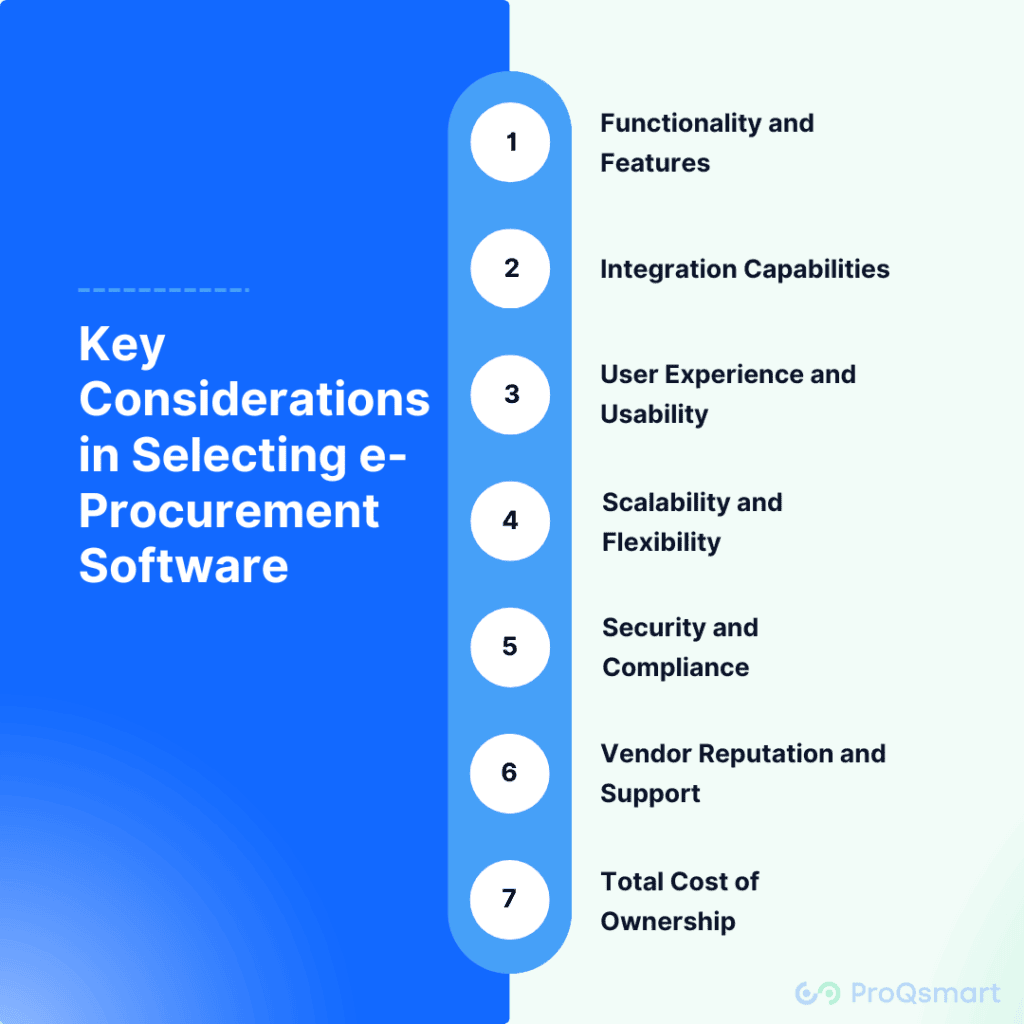Selecting the right eProcurement software is a crucial decision for businesses aiming to streamline their procurement processes, improve cost-efficiency, and enhance supplier relationships. With a myriad of options available, it’s vital to understand the key factors that should guide your decision to ensure you choose a solution that aligns with your business needs and objectives. This blog provides a detailed guide on how to select the most suitable eProcurement software for your organization.
Understanding Your Procurement Needs
Before diving into the selection process, clearly define your organization’s procurement requirements:
- Assess Current Procurement Processes: Identify the strengths and weaknesses of your current procurement system to understand the areas that need improvement.
- Define Your Objectives: Determine what you aim to achieve with the new e-Procurement system, such as cost savings, process efficiency, better supplier management, or improved spend visibility.
Key Considerations in Selecting eProcurement Software

Functionality and Features
- Ensure the software offers comprehensive features that address your specific procurement needs, including requisition management, order processing, supplier management, contract management, and spend analytics.
Integration Capabilities
- Choose software that can seamlessly integrate with your existing ERP, CRM, and financial systems to ensure smooth data flow and process continuity.
User Experience and Usability
- Opt for a platform with an intuitive user interface and straightforward navigation to facilitate user adoption and minimize training requirements.
Scalability and Flexibility
- The software should be scalable to accommodate future business growth and flexible enough to adapt to changing procurement strategies and market conditions.
Security and Compliance
- Ensure the software adheres to industry-standard security protocols and compliance requirements to protect your procurement data and transactions.
Vendor Reputation and Support
- Consider the vendor’s market reputation, experience in the industry, and the level of customer support provided, including training, implementation assistance, and ongoing technical support.
Total Cost of Ownership
- Evaluate the total cost of ownership, including licensing fees, implementation costs, training expenses, and any recurring maintenance or subscription fees.
The Selection Process
Market Research
- Conduct thorough market research to identify the available eProcurement software solutions that meet your identified needs.
Request for Information (RFI)/Request for Proposal (RFP)
- Develop and issue an RFI or RFP to potential vendors to gather detailed information about their offerings and assess their suitability.
eProcurement Software Demonstrations and Trials
- Arrange for software demonstrations and trials to evaluate the functionality and user-friendliness of shortlisted solutions.
Reference Checks and Case Studies
- Conduct reference checks and review case studies or testimonials to understand other customers’ experiences with the software and the vendor.
Final Evaluation and Selection
- Compare the shortlisted options based on the key considerations and select the e-Procurement software that best aligns with your procurement needs and business objectives.
Also Know: What is Procurement in Retail Industry
Conclusion
Choosing the right eProcurement software involves a comprehensive evaluation of your business’s procurement needs, thorough market research, and careful consideration of various factors including functionality, integration, user experience, and cost. By following a structured selection process, you can ensure that the e-Procurement solution you choose will effectively support your procurement processes, deliver tangible business benefits, and contribute to the overall success of your organization.


